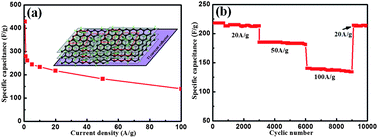Self-assembled reduced graphene oxide/carbon nanotube thin films as electrodes for supercapacitors
Abstract
Graphene oxide/

* Corresponding authors
a
Department of Mechanical Engineering, Hong Kong University of Science and Technology, Clear Water Bay, Kowloon, Hong Kong
E-mail:
mejkkim@ust.hk
Fax: +852-2358-1543
Tel: +852-2358-7207
Graphene oxide/

 Please wait while we load your content...
Something went wrong. Try again?
Please wait while we load your content...
Something went wrong. Try again?
Z. Huang, B. Zhang, S. Oh, Q. Zheng, X. Lin, N. Yousefi and J. Kim, J. Mater. Chem., 2012, 22, 3591 DOI: 10.1039/C2JM15048D
To request permission to reproduce material from this article, please go to the Copyright Clearance Center request page.
If you are an author contributing to an RSC publication, you do not need to request permission provided correct acknowledgement is given.
If you are the author of this article, you do not need to request permission to reproduce figures and diagrams provided correct acknowledgement is given. If you want to reproduce the whole article in a third-party publication (excluding your thesis/dissertation for which permission is not required) please go to the Copyright Clearance Center request page.
Read more about how to correctly acknowledge RSC content.
 Fetching data from CrossRef.
Fetching data from CrossRef.
This may take some time to load.
Loading related content
